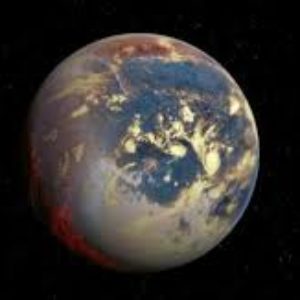NASA’s drawn-out Kepler mission, known as K2, has made another huge disclosure, uncovering the presence of three new exoplanets. The recently found outsider universes circle the nearby star GJ 9827 and were delegated “super-Earths.” The finding is exhibited in a paper distributed Sept. 6 on arXiv.org.
Kepler is the most productive planet-chasing telescope. The rocket has found more than 2,300 exoplanets to date. After the disappointment of its two response wheels in 2013, the missions was repurposeds as K2 to performs high-exactness photometry of chose fields in the ecliptic. From that point forward, the restored Kepler rocket has distinguished about 160 extrasolar universes.
Super-Earth Found Orbiting Nearby Star Presently, a group of cosmologists drove by Joseph Rodriguez of the Harvard-Smithsonian Center for Astrophysics (CfA) in Cambridge, Massachusetts, reports the finding of three new exoplanets from the information gave by K2. The Kepler shuttle watched GJ 9827 from December 2016 to March 2017, amid its Campaign 12. These perceptions enabled the group to find this nearby late K-sort small star is circled by three outsider universes. The recently found planets were delegated “super-Earths” as they have masses higher than Earth’s, however, lower than that of Solar System’s gas mammoths.
“In this paper, we introduce the disclosure of three traveling planets orbiting the nearby star GJ 9827 utilizing information from the K2 mission,” the scientists wrote in the paper.
Found approximately 100 light years from the Earth, GJ 9827 is a brilliant star of ghastly sort K6V. It has a range of around 0.63 sunlight based radii and is roughly 15 percent less enormous than our Sun. The researchers found that the star is hovered by three planets, assigned GJ 9827 b, c and d, situated around 0.02, 0.04 and 0.06 AU from the host individually.
As indicated by the paper, GJ 9827 b has a span of 1.64 Earth radii, yet its exact mass stays indeterminate. The analysts appraise that its mass ought to be in the vicinity of 3.5 and 4.26 Earth masses. The planet circles its parent star in around 1.21 days and has a balanced temperature of 1,119 K.
With a range of 1.29 globe radii and an expected mass of around 2.5 Earth masses, GJ 9827 c is littlest and less huge planets of the newfound trio. The exoplanet has a balanced temperature of 774 K and an orbital time of 3.65 days.
GJ 9827 d is around two times bigger than the Earth and no less than five times as gigantic as our planet. This outsider world has a balanced temperature of 648 K, and it takes it 6.2 days to completely circle its host star.
“It is likewise discernible from both the northern and southern sides of the equator, with the goal that it is an exceptionally intriguing for future high strength spectrographs and, specifically, for the conceivable location of another rough planet in the livable zone of the star Super-Earth Found Orbiting Nearby Star.”
The new disclosure detailed by Rodriguez’s group makes GJ 9827 the nearest exoplanet have found by the K2 mission to date. The star’s nearness and brilliance and additionally likeness in the measure of planets make the framework a superb focus for assist barometrical investigations. The researchers trust that future space observatories like the James Webb Space Telescope (JWST) could give essential bits of knowledge about environmental properties of the three newfound extrasolar universes.


